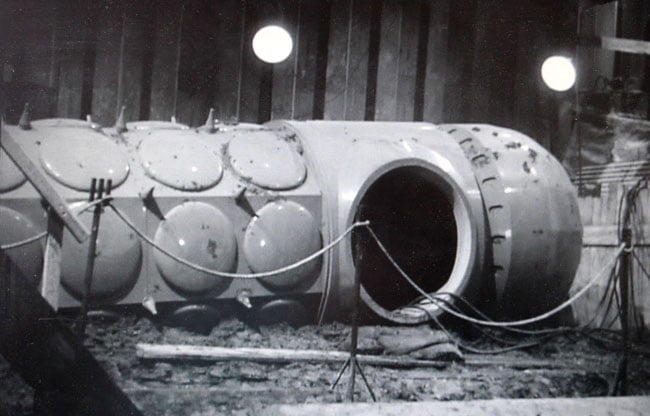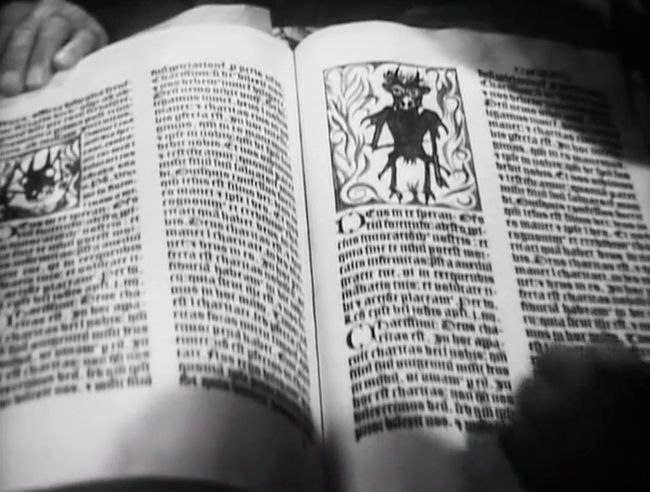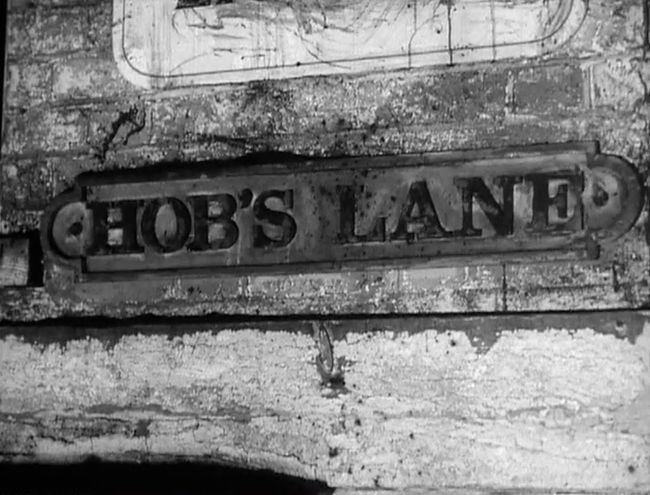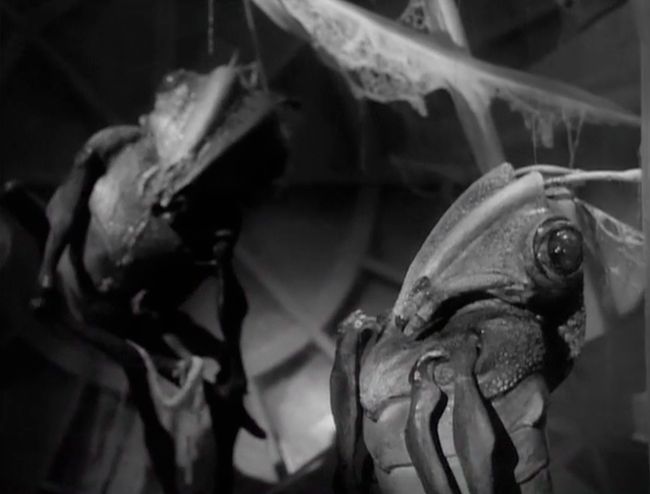This article is more than 1 year old
Mars, bringer of WAR: Quatermass and the Pit
Britain’s arch boffin battles our erstwhile Martian overlords
‘The chances of anything coming from Mars are a million to one’
The fact that an ‘apeman’ skull is found inside too reveals that the “earliest known true hominid” fossils, already seen to be from a higher branch of the evolutionary tree than humanity’s contemporary forebears should have been and literally millions of years ahead of their time, travelled to Earth in the same ship.
It’s a dramatic enough story as it is, but Kneale takes it further, working in theories and ideas then coming into vogue, most notably the concept of ‘race memories’ - fragments of past human experience preserved through the aeons in individual human brains as if encoded at the genetic level. While investigating the mystery of Hobbs Lane, the site of the crash, Quatermass hears the call of humanity’s ancient alien ancestry echoing time and again through the centuries.

Penetrating the Earth: the rather phallic Martian pod
Source: BBC/2 Entertain
It’s a theme Kneale would return to in Quatermass, in the nursery rhymes and local legends and superstitions that surround the stone circles raised by Bronze Age Britons to mark the sites of past extraterrestrial visitations. Back in 1958, though, it was Medieval manuscripts, gargoyles and street names that tell of humanity’s ancient past, not to mention a long history of ghosties and ghoulies and things that go "bump" in the night all seen and heard in the vicinity of the buried space pod.
In Quatermass and the Pit, these echoes are literally diabolic, allowing the writer to invoke supernatural horrors to put the willies up his audience. Notions of the Devil stalking the Earth aren’t as unsettling now as they would have been in the more religious 1950s, but the physical and mental effect of the Martian ship’s psychic echoes on the drill operator Sladden - not to mention the clever, trick and treat special effects used to convey the psychokinetic storm breaking around him - still thrill.
The Martian, of course, is the Devil, the Christian fiend subsequently formed from memories buried as deeply in the human psyche as the space capsule was in the London clay. It’s an idea one 1970s Doctor Who production team was to adopt and use in a more literal sense: the alien Daemon Azal conjured up in a Devil’s End long barrow by the Master is not some vaguely diabolic prototype but the real thing, albeit amoral rather than evil.

Humanity’s ancient enemy revealed through history
Source: BBC/2 Entertain
Like Jon Pertwee’s Doctor, Quatermass is the arch-sceptic. No belief in magic or the supernatural for him - these are simply phenomena not yet accessible to current technology and understanding. Ironically, the professor’s rival, Colonel Breen, called in by Quatermass to speed the efforts of the Army bomb disposal team sent in to defuse the buried rocket, doesn’t believe in any of it either. But his mind is closed to the implications of the scientifically recovered evidence. For him, the remains, the craft and the mummified Martians are tricks fabricated by desperate Nazis out to scare brave Blighty into submission.
That said, even Quatermass himself initially distances himself from talk of the occult. The true experimentalist, it’s only by experiencing at first hand the weird phenomena present in Hobbs Lane that he comes to realise a scientific truth might lie behind what earlier ages considered the work of goblins, imps and demons. As Arthur Clarke said, any sufficiently advanced technology is indistinguishable from magic. Writing a scientific take on the supernatural would serve Kneale well: he went back to it in his 1972 screenplay The Stone Tape.
And magic-seeming technology comes to Quatermass’ rescue: a mind-reading device devised by Roney to visualise the mental realms traversed by trance-bound Shamans. Quatermass’ brain is too ordered, too modern to pull a picture out of our racial memory bank, but Roney’s fey assistant, Barbara Judd, is able to call up images of Martian hive wars - the prototype of humanity’s own violent and anti-racial urges.

Devilgate Drive
Source: BBC/2 Entertain
And yet, when the space pod unleashes a storm of psychic energy on the people of London after being activated by the electrical energy fed into the pit for a live TV broadcast of its final exposure as a fake, it’s good old-fashioned iron - legendarily the enemy of the supernatural, and here in the form of an old chain used to drain energy away from the pod to Earth - that saves the day.
And, like America during World War II, Roney, the man from across the Atlantic, arrives in the nick of time to help Quatermass, now too weak to resist the onslaught of evil. It’s Roney, not Quatermass, who shorts the pod’s power supply, sacrificing himself in the process, but saving London and civilisation.
If science and technology helped Quatermass defeat the "devil" in the pit, it also ensured the survival of the serial itself.

Bringers of war
Source: BBC/2 Entertain
Quatermass and the Pit’s six 35-minute episodes were captured on electronic cameras during their near-live performances at London’s Riverside Studios in Hammersmith during November and December 1958. Pre-shot sequences were fed in from telecine’d 35mm film during recording.
